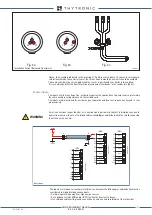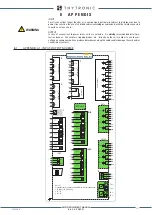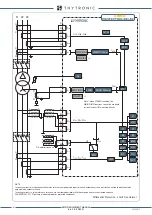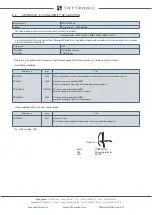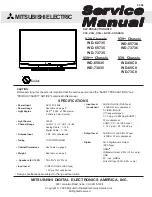
380
APPENDIX
Differential Protection - Generator
(*) Antiferrorisonance
XMR-D
L1 L2 L3
P1
S1
S2
P2
P1
S1
S2
P2
I
L1H
I
L2H
I
L3H
P1
S1
S2
P2
P1
S1
S2
P2
G
I
E2
P1
S1
S2
P2
U
L1
U
L2
U
L3
A
N
B
N
C
N
n
a
n
b
n
c
B1
B2
B3
B4
B5
B6
U
L1
,
U
L2
,
U
L3
I
L1H
,
I
L2H
,
I
L3H
I
L1L
,
I
L2L
,
I
L3L
U
E
U
EC
U
E
U
EC
I
ECH
I
ECH
I
ECL
74CT
81U
50/51
81O
59
27V1
27
40
51V
46
49
47
37P
37
21
87G
59V2
74TCS
BF
26
*
64REF
U
EC
U
E
I
ECH
I
ECL
50N/51N(Comp)
50N.2/51N.2
87NHIZ
50N.1/51N.1
59N
67N
67N(Comp)
74VT
74CT
I
L1L
I
L2L
I
L3L
A2
A3
A4
A5
A6
A7
A8
I
E1
B7
B8
dn
da
dn
db
dn
dc
(*)
50/51
A1
NOTE
Incoming currents must be connected to relay reference amperometric input terminals; outgoing currents must be connected to protection relay
amperometric output terminals.
Incoming currents in relay reference terminals are considered positive, while the outgoing ones are considered negative.
CONVENTION - CT’s P1 polarity is indicated towards protected component.
Note *: when 87NHIZ is enabled, the 50N/51N/67N functions can not be used with
residual current (IE) measured directly
Z1
Z2
Z3
Z4
Z5
Z6
Z7
Z8
8.3
APPENDIX A3 - APPLICATION SCHEMES
XMR-D EQUIPMENT MANUAL
Ed. 2.9 - 02/2021


